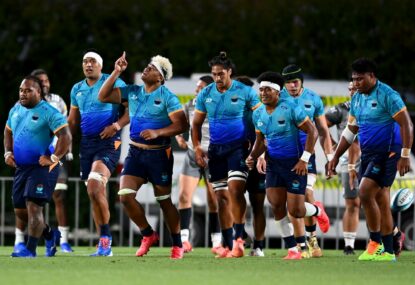Super Rugby W has been the most competitive to date but can anyone stop the in-form Tahs in the semifinals?
After missing out on the title the last two years the Tahs players seem laser focused to win this year.
Opinion

A quick reading of what happened in the Six Nations, which reflects the state of things in world rugby, allows us to glimpse a certain tendency to decrease the kicked possession ratio.
Or, what is the same: whenever a team has control of the ball, it plays moderately using the foot or uses it when it is pressured by its defensive situation.
The statement arises from comparing the 2019-2021 triennium with the 2022 edition, where – with the exception of Scotland and Italy – all the squads have reduced the kicked possession ratio.
We could attribute this to many reasons, from the implementation of game plans based on speeding up the transfer of the ball, such as those in Ireland or France, to a greater demand for spectacle and entertainment from fans, especially the television ones.
I like to think that the game has changed and is still quietly changing at every club and every academy.
Eddie Jones’ England, for example, should have made room for a more expansive game with greater control of the game in all its phases. Even South Africa, a regular performer of the aerial game, have had to adapt their intensity to gain an advantage against the All Blacks in the last Rugby Championship.
Looking at Super Rugby Pacific, both Moana Pasifika and Fijian Drua, the two recent additions to the competition, rarely use footwork as their primary attacking weapon. But we do have some differences between them, based on how their game plan relates to ball possession and territorial occupation.
Moana Pasifika hired the services of the experienced Christian Lealiifano, monopolising the use of kicks to total an average of 14 kicks per game.
Lealiifano’s stability in the game creator position has contributed to the development of a foot-oriented game like that of the Drua, who have varied men without consolidating the game driver position and reflects this in an average of eight kicks per game.
I previously speculated that part of the DNA of the Pacific teams would focus on physical game and control in the middle of the field. Today, this characteristic is almost unique to Drua, as Moana has shown, even in their win against the Hurricanes, a tendency towards expansive game and managing the territorial threat through kicks.
The clip below shows Drua’s options to go out of his own field towards the opponent’s, where they prefer the path of physical contact before contesting a line in the opponent’s field.
Undoubtedly, Drua evaluates different reasons than Moana for implementing the kick game, but both find themselves one step behind the strategy of chasing the ball once the kick has been executed.
Fijian Drua, for example, have the second-highest number of carries executed (625) and the lowest kicked possession in the Australian conference (14.1%) after six rounds. This is the true DNA of the Drua, since I have been able to meet them in their participation in the NRC in Australia.
As I said before, the game adapts and changes constantly and the variations with the use of the foot are no exception.